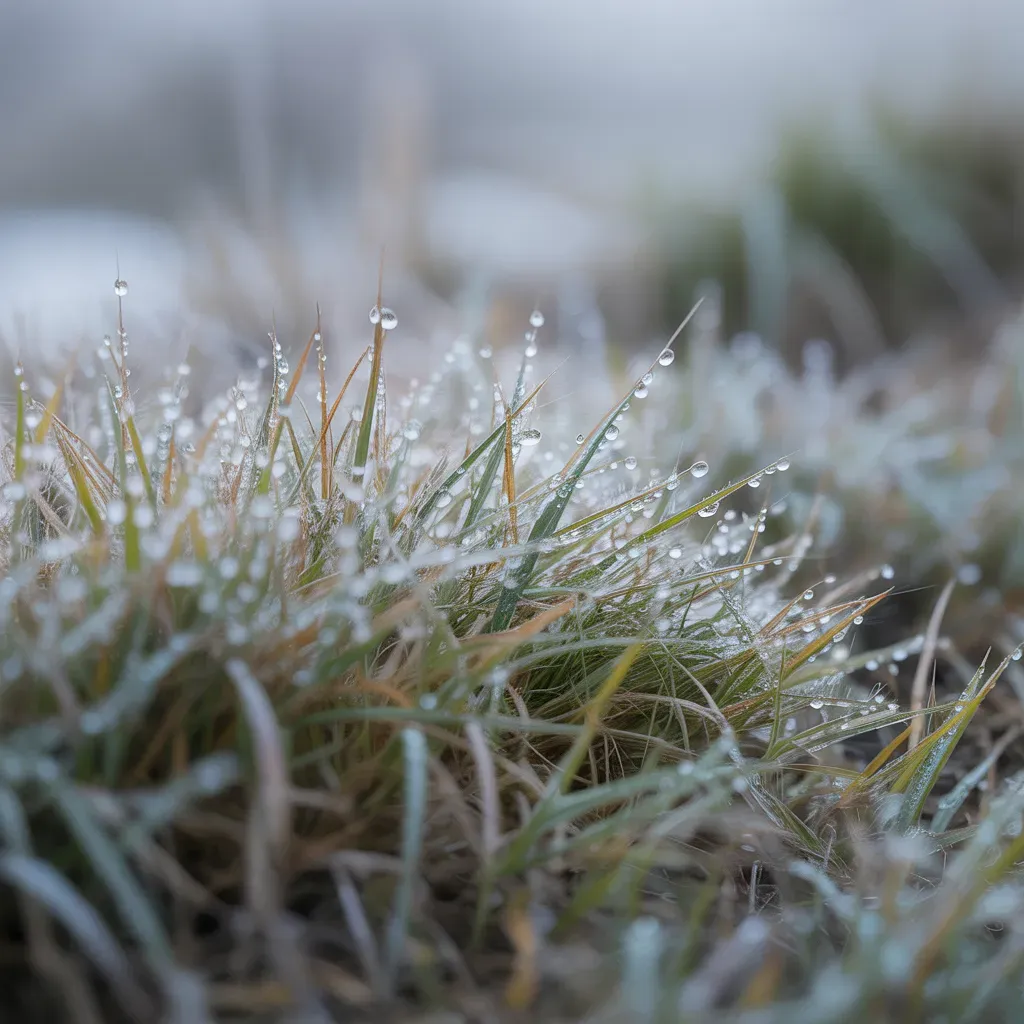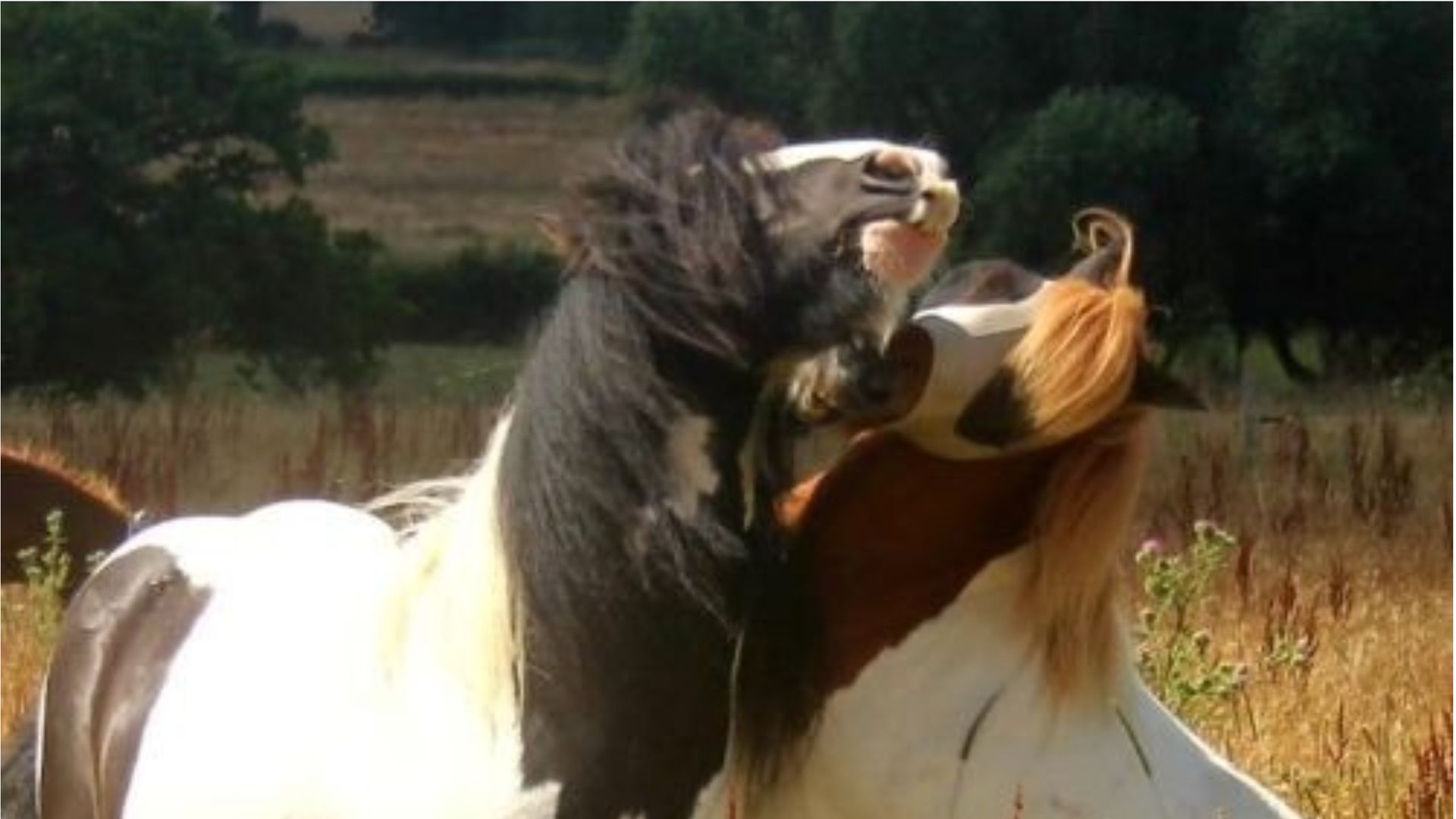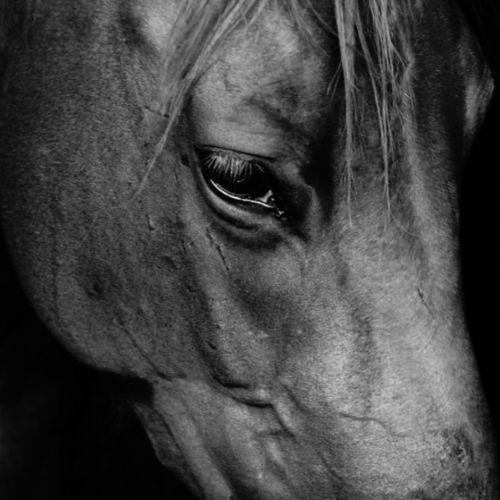We are what we eat - meet the Commensal Gut Microbes
(Yes I know the image relates to our human diet, but I think you'll get the picture 😉)
It’s always good to hear positive news on improving the health of our horses, and especially with us all having become microbiome-aware over the last few years, as well as many horse carers investing in the EquiBiome test.
There’s also a new word on the block – commensal gut microbes. I say ‘new’; the term's actually been around for a while, but for the past however-long we’re probably more familiar with the word ‘friendly’, as in the ‘friendly’ gut bacteria/microbes that do all the good stuff for the body.
In latin, ‘commensal’ means ‘to eat at the same table’, so to use their proper name in context, the commensal bacteria are the ‘friendlies’ who, in essence, eat/feed ‘at the same table’ as us, as in they eat the same food we eat.
In return, provided we’ve fed them with the right stuff (as in not junk, which feed the bad, unfriendlies), they look after us right back, as in you, me, or our horses, by generating protective responses to prevent the bad guys - those pro-inflammatory, gut-damaging microbes - taking over the microbiome colonies, and kickstarting the hindgut acidosis/dysbiosis/SIBO/leaky gut domino-effect as they go.
It’s basically about the entire ecosystem of the gut system, and just like us, our horses literally are what they eat. By feeding the right food to our horse, and therefore the friendly commensal bacteria, those microbes will be more successful and reproduce at a higher rate, crowding the bad guys out of the picture.
The hindgut bacteria responsible for fermenting the fibre portion of our horse’s grass forage are typically associated with a higher, more neutral pH in the gut which is exactly how it should be – the intestinal region should always be at a neutral pH value. However, feed junk, i.e. sugars, starches, bad carbs, refined, artificial, uber-processed, and not enough of the species-appropriate cellulose fibre, and we’re simply feeding the pro-inflammatory bacteria, who will then over-flourish and produce negative by-products for the horse, i.e. lactic-acid (the haylage connection), which lowers the pH value to acidic … cue that aforementioned hindgut acidosis domino-effect.
So, keeping the commensals happy is crucial. Feed a species-appropriate, diverse plant-based diet of appropriate fibre-rich grass forage and plant foods, and you look after the entire gut ecosystem. And the only place to get this appropriate fibre? Long, stemmy grass/hay - not our neon-green grass which is nothing but leaf blades with no stems or fibre; we need those grass blades to grow into a long stem over a summer as this is where that vital fibre resides. But … it’s an even bigger picture than this.
Prebiotics
Feeding a range of diverse, stemmy fibre-rich grass forage (hay) also ensures a varied intake of specialised prebiotic fibres. They not only act like a fertiliser that stimulates the growth of the commensal friendlies, but they also maximise the abundance of beneficial metabolites - those hindgut fermentation by-products necessary for the body’s metabolism, aka postbiotics.
Before you get brain-freeze, don’t panic – we already know these guys. Metabolites/postbiotics are those bioactive compounds we know as short-chain fatty acids – proprionate, butyrate and acetate, which are the very source of our horse’s energy, plus certain amino acids and vitamins, particularly two vital B-vits in a specific activated form, not to be confused with the regular form we get in typical B-vit supplements, which the horse's gut system neither recognises or knows what to do with, so hoofs them straight out for excretion. As the saying goes, 'An expensive way to make urine'.
We're specifically talking about vit.B12 as methylcobalamin and B6 as pyridoxal-5-phosphate, aka P5P, and not synthetic pyridoxine (check your B-vit supplement). P5P (not pyridoxine), is critical for the liver’s natural detoxification role, and very much part of the KPU-affected horse's recovery therapy. If your B-vit supplement contains pyridoxine, again, another expensive way to make urine.
These metabolites, collectively amongst others, provide our horse with system-wide nutritional, metabolic, immunomodulatory, anti-inflammatory and antioxidant properties. What’s not to love about that … 😉.
It gets even better. Prebiotics also help prevent the colonisation of Salmonella and E coli bacteria. How? 🤓Science Alert!🤓 They do so by binding to the carbohydrate receptor sites on the actual bacteria which are usually used to bind to the intestinal wall epithelial cells, tricking them that they’re already bound to the epithelial cells, so preventing them from proliferating. It’s now even thought that prebiotics may be a useful alternative to antibiotics. Science Alert over.
So, long and short, provided we feed our horse with what they’re meant to eat, those commensal bacteria will not only look after the host, but create a whole extra range of beneficial metabolites/postbiotics. Happy days 😊.
Here’s why keeping up with the latest science is so important. Another vital consideration regarding the metabolism of prebiotics, their resulting postbiotics, and subsequent health benefits, depends entirely on the variation – the diversity - of the total gut microbial composition. Specifically, health benefits will only be fully achieved if specific bacteria/groups of bacteria are present within the entire eco-system of the gut landscape. It's an even bigger picture than this though – it’s also about the diversity of the forage our horses eat, as in a range of various species of grass forage, because … it’s all about the different fibre qualities, as in cellulose/hemicellulose, that goes through the hindgut.
Remember, the whole microbiome - the very eco-system of all the trillions of bacteria bugs in the gut system - outnumber the body’s cells by at least 10-1; they also outnumber DNA cells by a whopping 100-1 (we really are all more bug than organism), so the current thinking is now saying that supplementing just one type of microbe could well disrupt this fragile ecology.
In other words, making sure the right bugs are in the microbiome is key. As I type, the primary focus now on equine prebiotics is focusing on actual foods – what foods are prebiotic that are going to help the beneficial bacteria to grow? You may have seen Jerusalem artichoke or chicory, foods that feed the good bacteria to grow within the gut, and not necessarily inulin (which is pectin-oriented), nor fructo (sugar), nor mannan (yeasts).
There’s an old vet technique used in the days before antibiotics, where a ‘poo tea’ was fed by nasal gastric tube to reestablish a damaged microbiome. It’s still occasionally done, but these days the difficulty is finding a donor horse with a healthy hindgut who has never had haylage, or antibiotics, plus it needs to be ‘fresh’ poo as the faecal microbes oxidise very quickly. Research is apparently ongoing on this though.
In that strange, perfect, parallel world that none of us live in, life would be so much easier if we could simply be able to feed healthy, equine microbiome-appropriate, cellulose-digesting microbes to our horse when there’s a biome disturbance, to regenerate the microbiome and outgrow the bad guys. This way we’d easily be able to support and restore the natural microbiome that the equine gut system has evolved since millenia, because the modern-day equine gut hasn't changed one iota from their wild-horse ancestors from all those millions of years ago. But sadly, such a supplement doesn’t exist. Yet.
Long and short? It's more about living more probiotically, feeding the commensal hindgut cellulose-digesting microbes with what they like to feed on, namely stemmy, cellulose-rich hay. Feed decent hay 24/7, and the thinking now is that maybe there might be no need to feed a probiotic.










